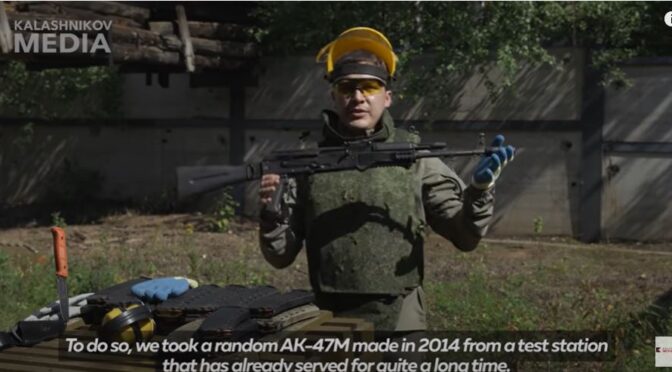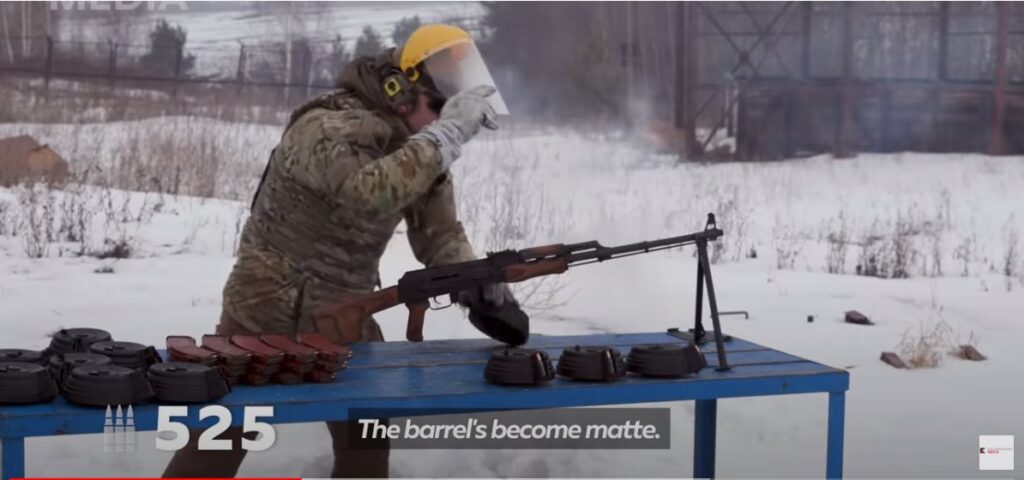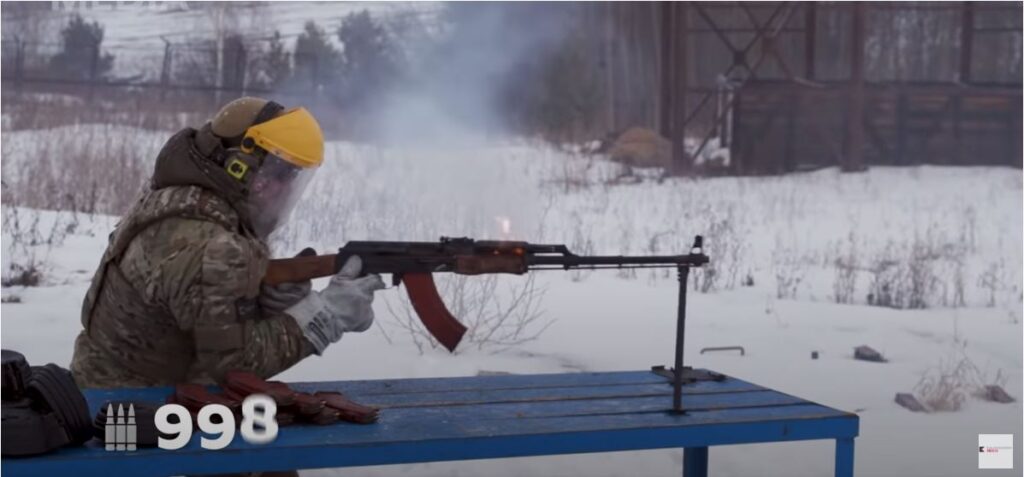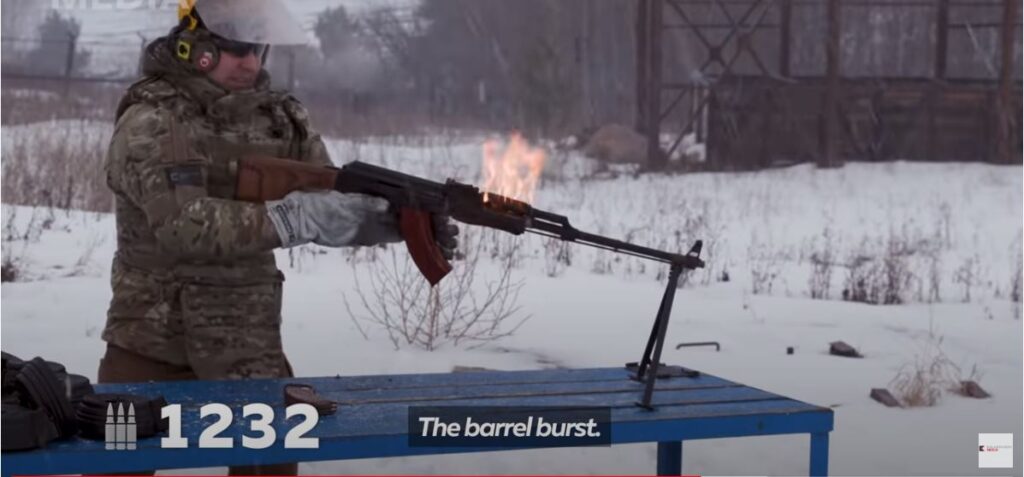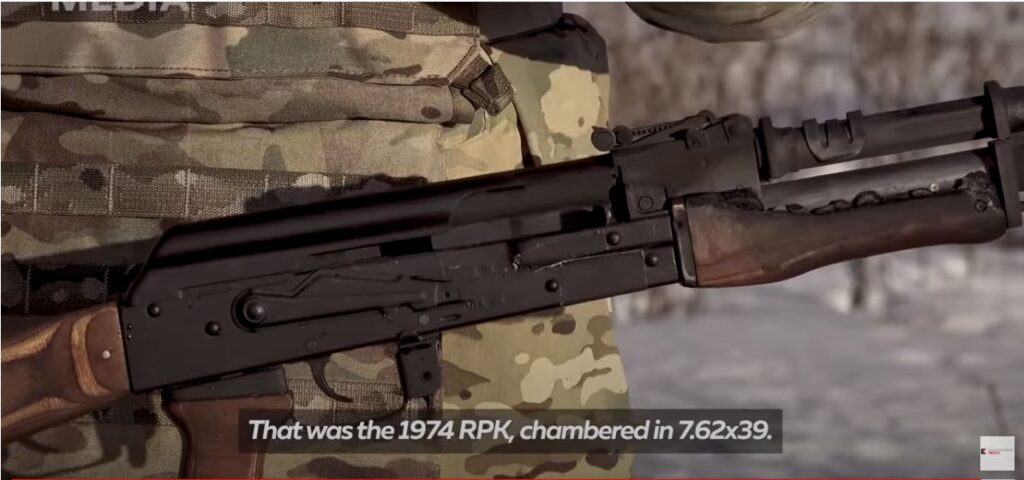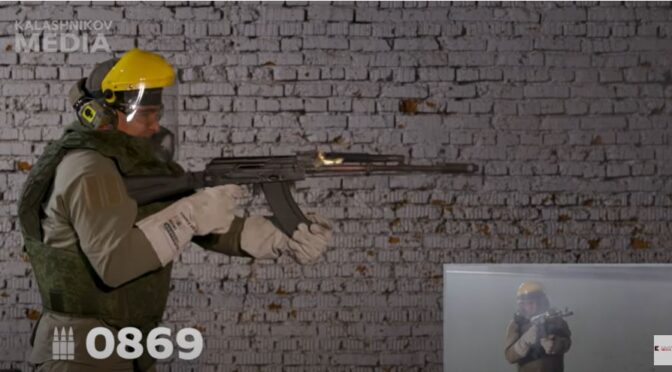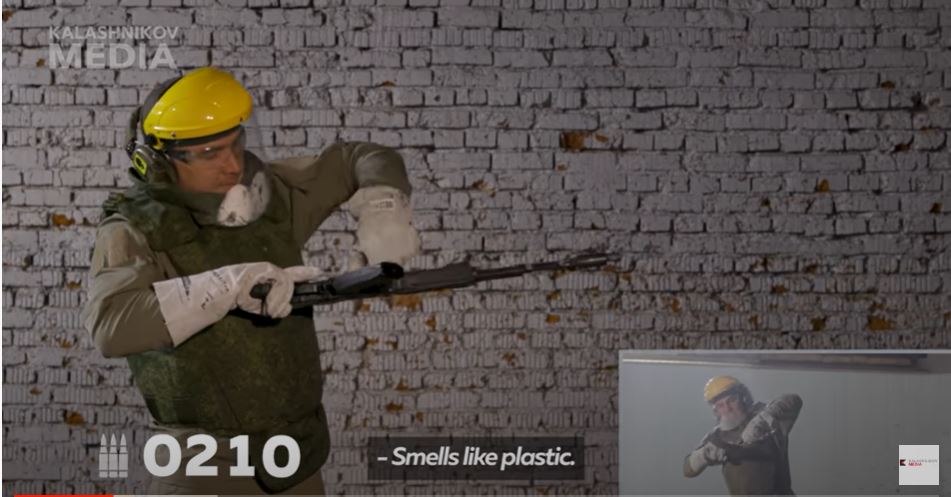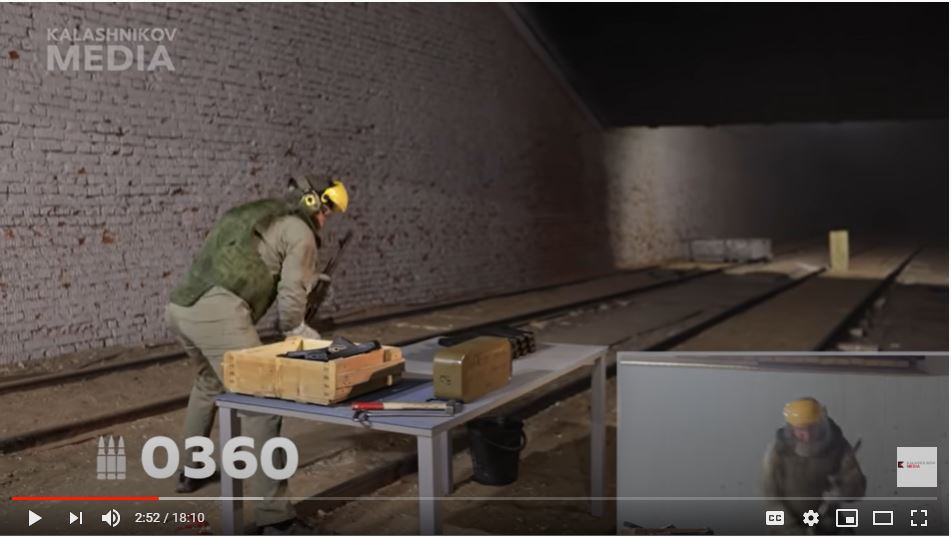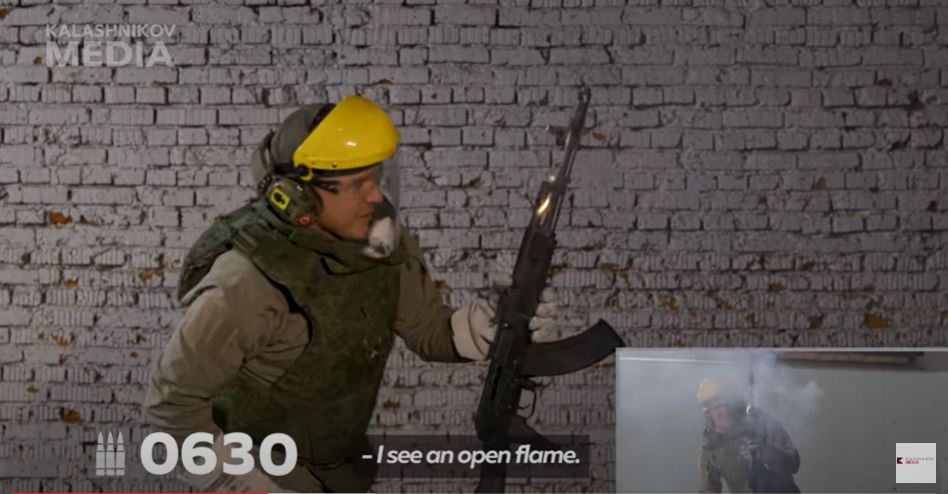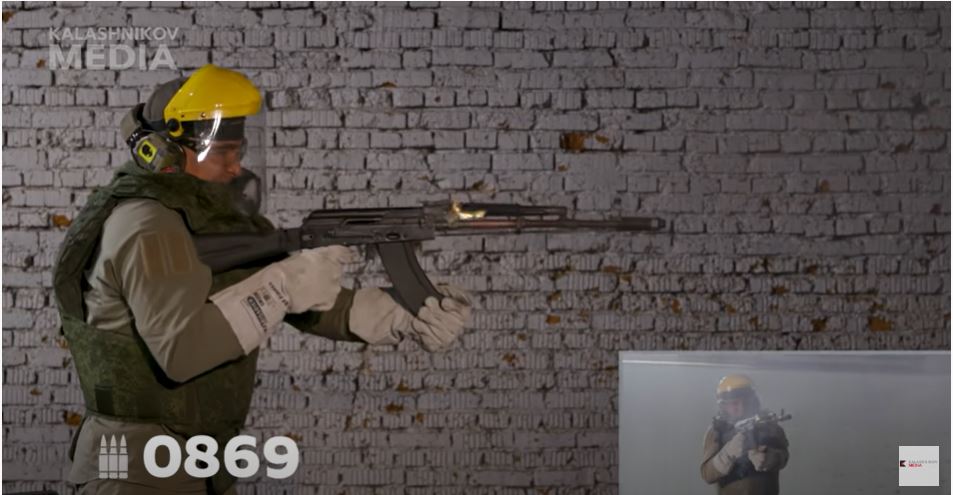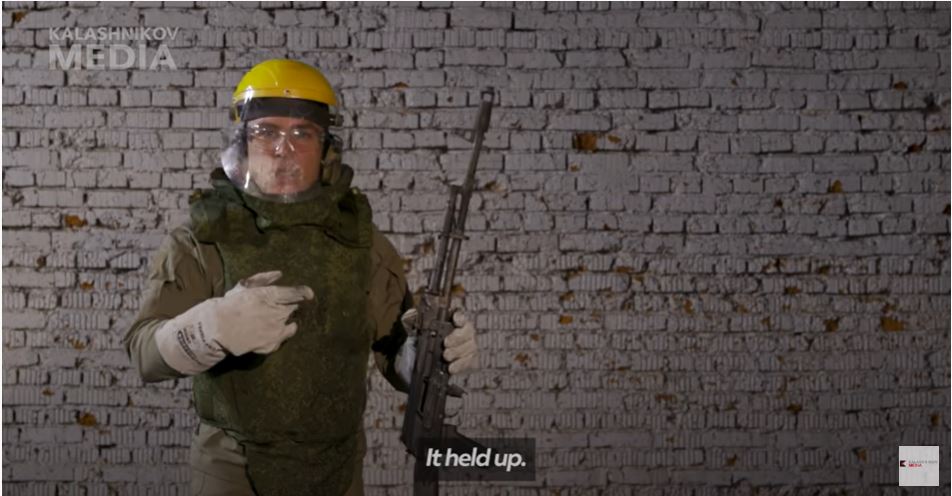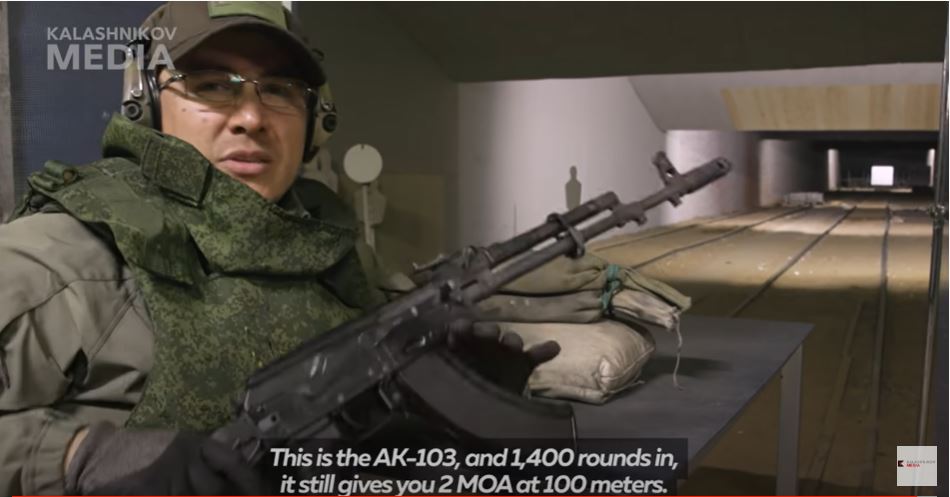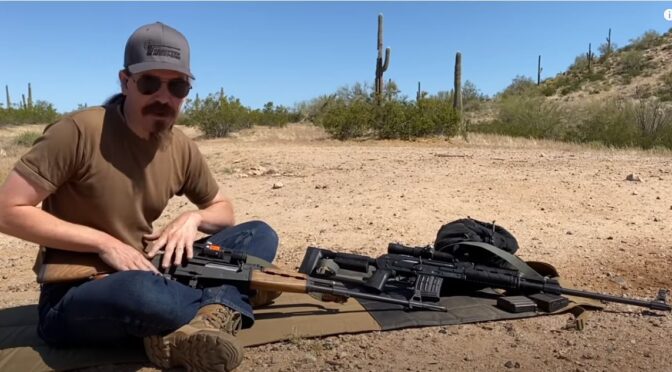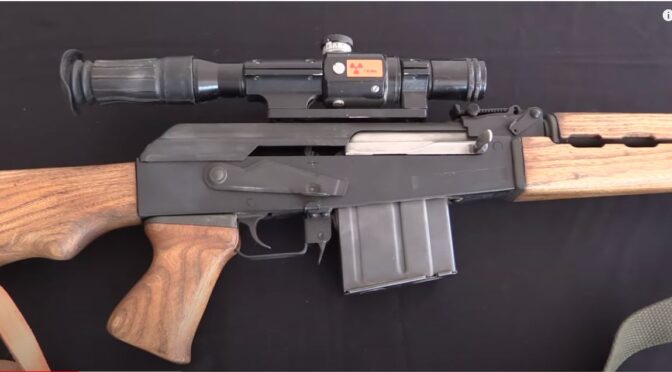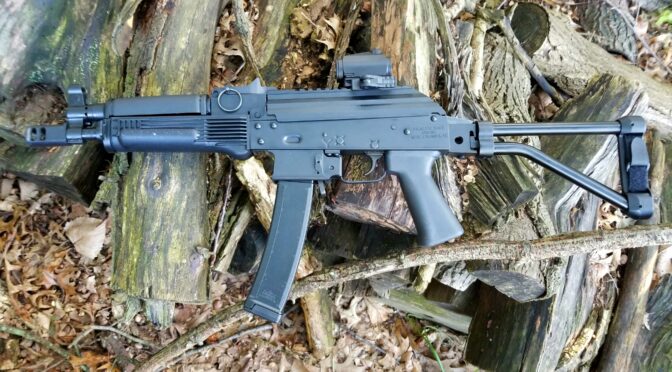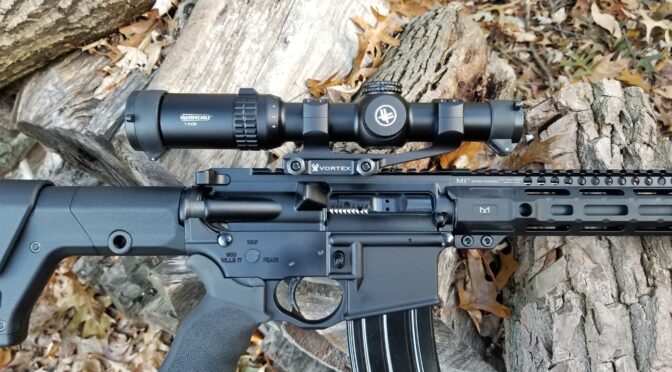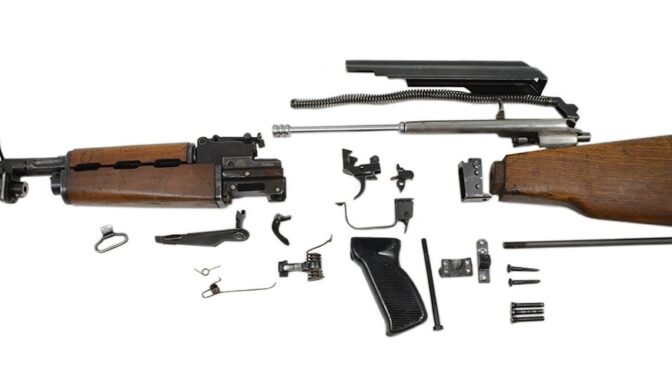In this episode, Georgiy Gubich operates a 5.45×39 AK-74M built in 2014 on full auto until it fails. You’ll notice he is wearing body armor and for good reason as you’ll learn from the video.
As with his other videos, you definitely want to watch it to hear his observations during the testing and the post mortem review afterwards.
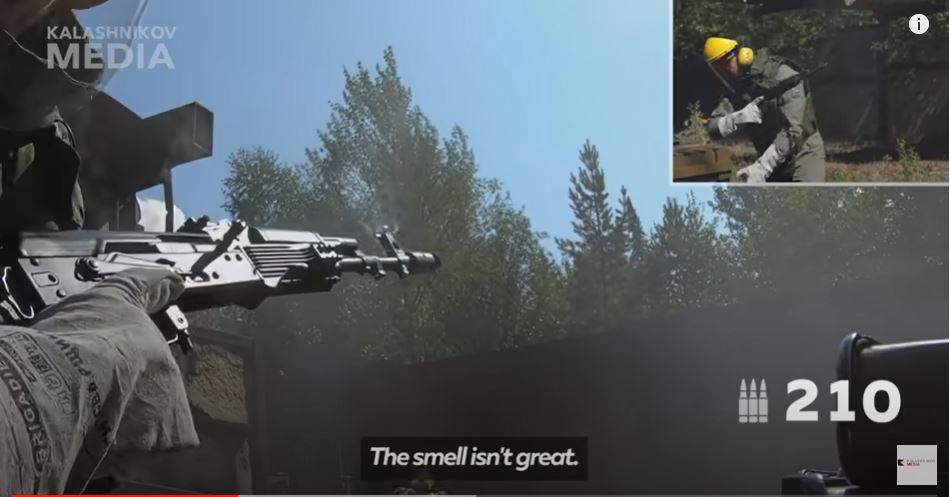
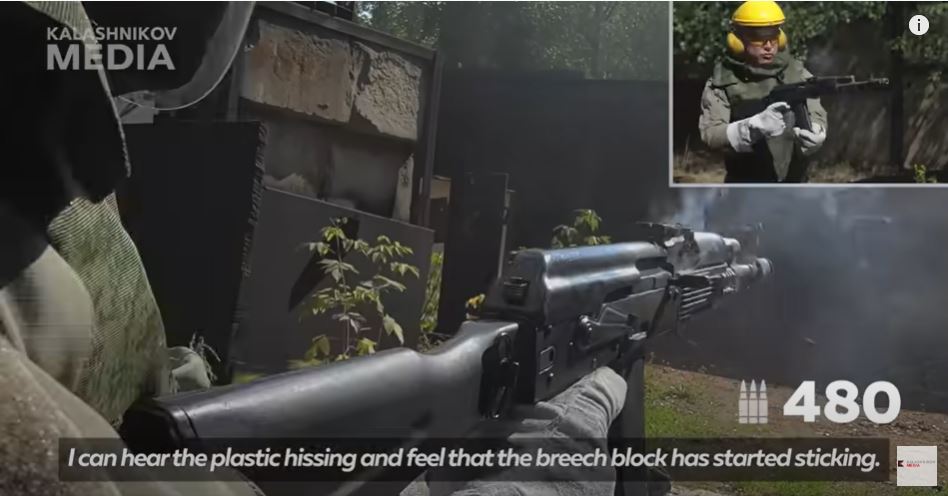
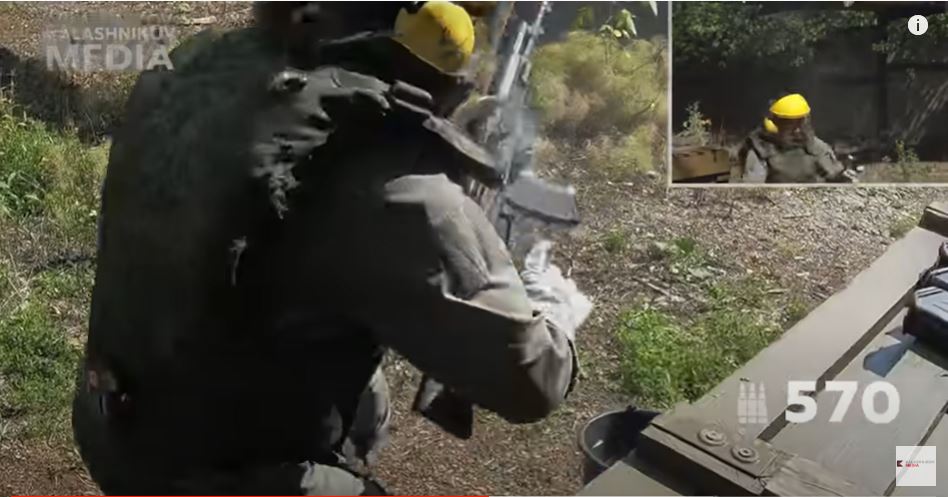
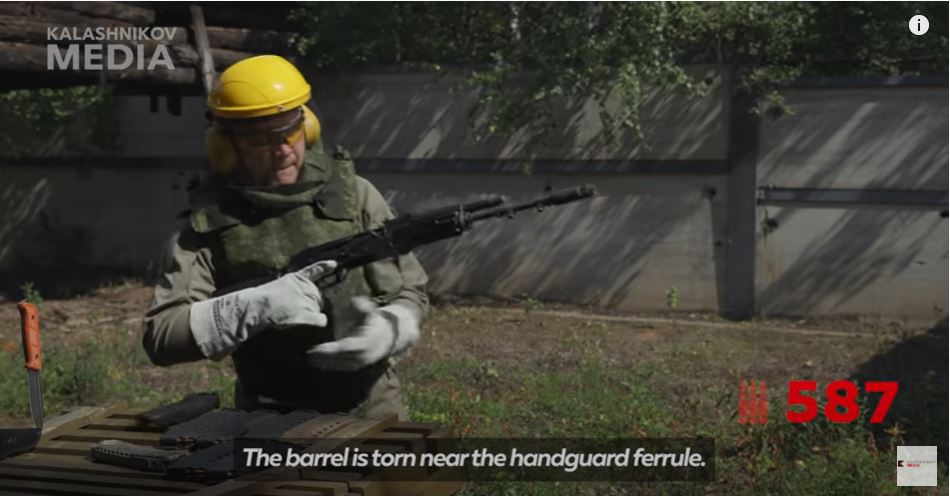
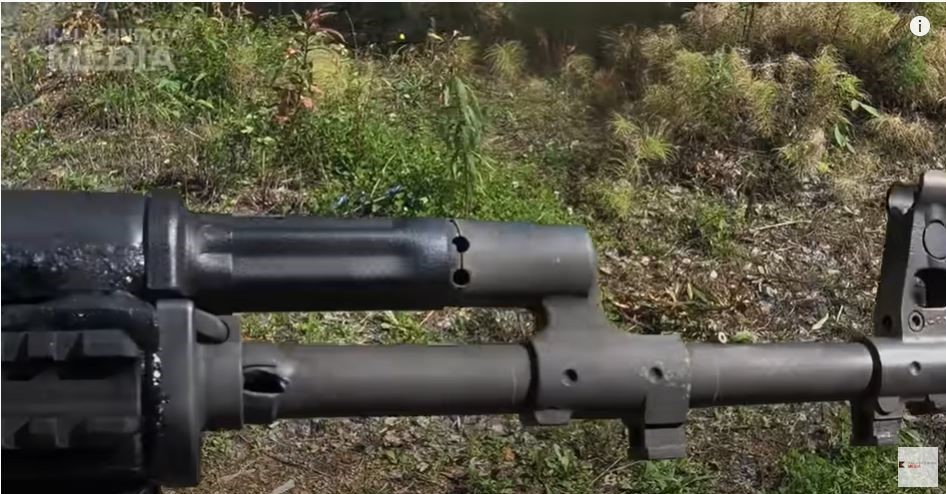
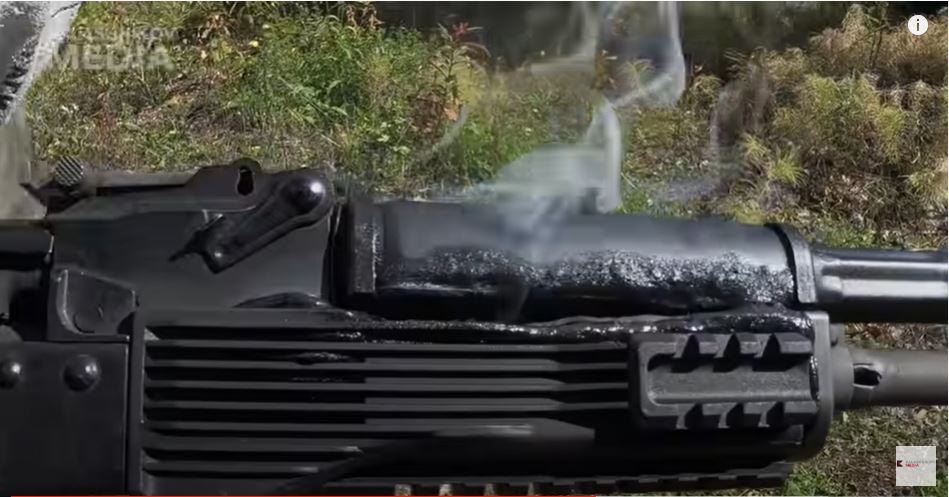
Watch the Video!
Summary
Definitely a cool video and I appreciate Kalashnikov Concern making it possible. Georgiy rocks and really like how he changes mags and cycles the action not to mention his running observations during and after the test.
The biggest take-away for me by far is the understanding of why they ribbed the lower handguards – enabling the ribs to cool enough to maintain structural integrity is fascinating. In theory there will be a upper round-count limit causing more heat than can be dissipated but under practical use, they ought to hold up great.
I hope you found it interesting as well.
Please note that all images were extracted from the video and are the property of their respective owner.
If you find this post useful, please share the link on Facebook, with your friends, etc. Your support is much appreciated and if you have any feedback, please email me at in**@*********ps.com. Please note that for links to other websites, we are only paid if there is an affiliate program such as Avantlink, Impact, Amazon and eBay and only if you purchase something. If you’d like to directly contribute towards our continued reporting, please visit our funding page.
PSA AK Webstore Links
Interested in an American made AK? Consider Palmetto State Armory (PSA) as a source. Click on the following links for the associated webstore categories for AK-related rifles, pistols and parts at PSA:
- PSA AK-74 – PSA, just released their 5.45×39 rifle
- PSA AK-47 GF4
- AK-V (their Vityaz-inspired wicked 9mm) – [click here for my blog posts on the one I bought and converted] – this includes accessories
- Accessories including magazines, handguards, grips, triggers and more
- They are also selling individual parts such as springs, barrels, bolt carriers, furniture sets, repair kits and more
